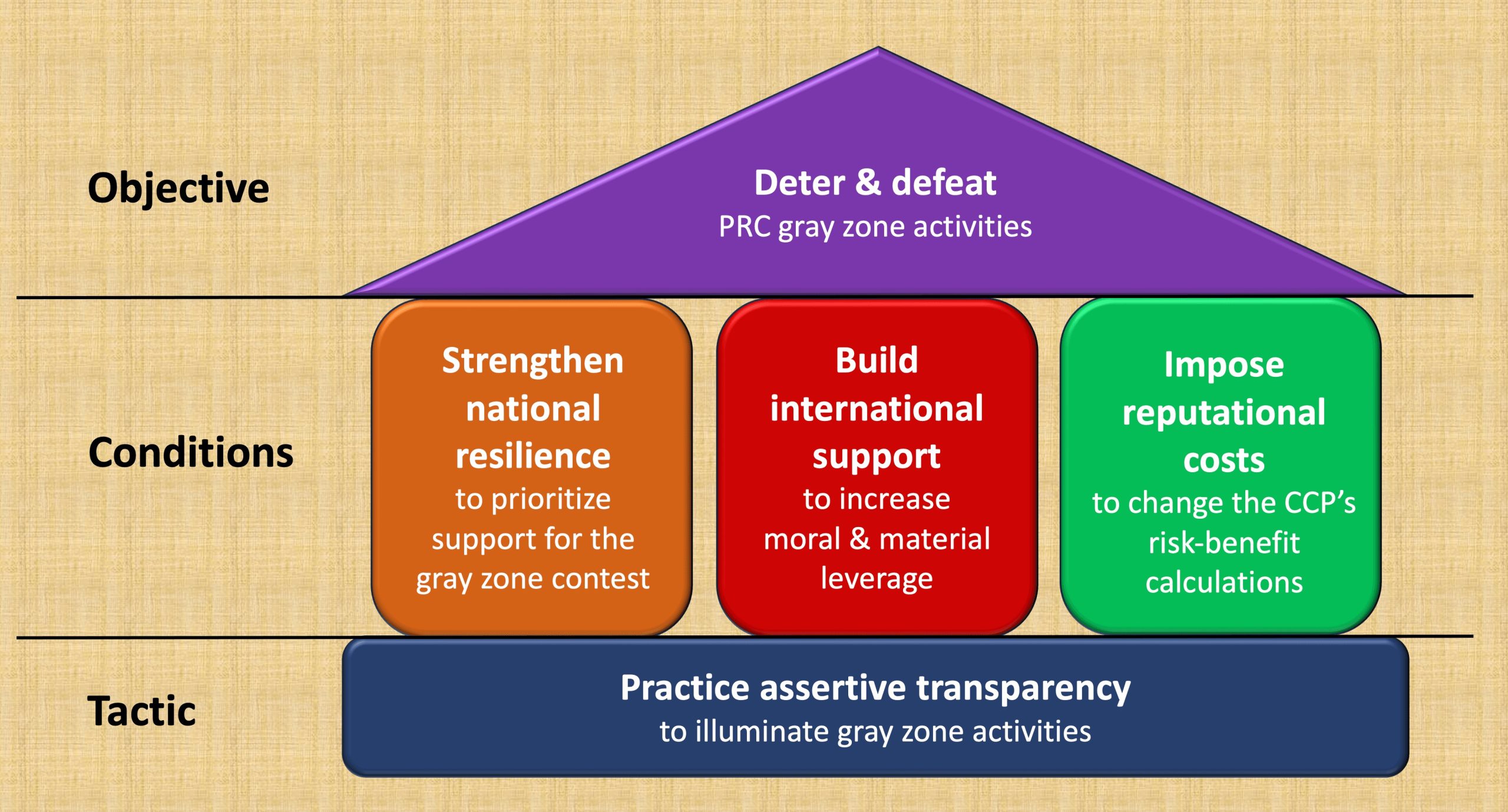2023 has been a game-changer in the West Philippine Sea, and the world is only just starting to grapple with its implications.
This century has seen two great innovations in counter gray zone statecraft–at least in the maritime space–and the Philippines authored both of them.
A decade ago, Manila initiated an incredible lawfare coup by taking China to court in The Hague, ultimately walking away with a arbitration victory so sweeping that Beijing could do little in response except try to dismiss it as “illegal, null and void”.
Yet while the election of a more friendly Philippine government may have eased the ruling’s bite somewhat, China has not been able to escape its long-term consequences. The 2016 decision has stood the tests of both time and neglect, becoming more integral to the international argument against China’s maritime aggressions, even as it continues to gain significant new support.
By any reasonable measure, the Philippines changed the game by conclusively reframing its maritime contest with China from one of “us vs. them” to one of “right vs. wrong.”
Fast-forward to 2023, and we find ourselves gazing in wonder at a second great Philippine innovation. This time Manila’s target is the gray zone of opacity and deniability in which China has so relentlessly pressed its advantage, and its chief weapon is photography, applied purposefully, generously and consistently over time.
It’s an approach we at SeaLight have termed “assertive transparency”, and it is a game-changer.
Assertive transparency describes the tactic of deliberately seeking out the dark spaces where gray zone actors conduct their illegal, malign and coercive acts, and then exposing them to public view.

To state the obvious, a gray zone actor thrives where the zone is gray. The full light of day is its natural adversary.
Put another way, China has enjoyed an asymmetric advantage by its willingness to exploit the outlaw ocean‘s natural murkiness. This is the year that Manila found and leveraged its own asymmetric advantage by exposing what China wanted to remain hidden.

This brings us back to the diagram at the top of the page, because transparency is ultimately a means to an end, not the end itself. Lighting up the maritime gray zone is one crucial tactic in pursuit of a larger objective–deterring and defeating gray zone activities.

In 2023, the Philippines has effectively used assertive transparency to help it set conditions for success by:
1. Strengthening national resilience, whereby a nation rallies its people and institutions to engage effectively in the long-term gray zone contest. Success requires investments in maritime security when domestic needs are pressing; bold action when acquiescence seems far easier; and political courage when rivals shout criticism. In a democracy, none of this is sustainable without the support of the population, which will not long support campaigns against adversaries it can’t see.

2. Building international support, which provides invaluable leverage to a smaller country vying against a larger one. The Philippines’ transparency campaign has yielded impressive moral support from like-minded governments across the globe. There has also been evidence of increased material aid, such as promises of joint West Philippine Sea patrols and help in building the country’s maritime capacity.
3. Imposing reputational costs on the gray zone actor, forcing it to recalculate the increased risks of continuing its aggressions against the benefits it hopes to achieve from them.
Though assertive transparency is not itself sufficient to win a protracted struggle against a powerful, ruthless and determined gray zone actor, it is an exciting and important innovation–one which has given Manila a new means to check China’s seemingly inexorable quest to consolidate its control of the West Philippine Sea.
It has also given the rest of the world something to think about. Now will others follow suit?

